
Knowing Straightness Training Intellectually vs Experientially
Once upon a time, there was an old Grandmaster, well respected, and very old.
He was about to write a book to capture all his knowledge and wisdom before he died.
Somebody asked:
“To whom do you owe it, that you have all this knowledge and wisdom, and became such a skillful Grandmaster?”
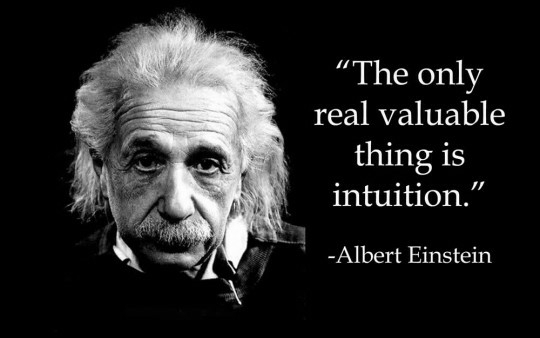
The Grandmaster replied:
“I owe it mainly to my intuition and rich experience.”
The man asked:
“Then why would you share all your knowledge?
Why would you want to deprive the younger generation of the opportunity to develop their intuition and a rich experience?
Isn’t it like giving them fish, instead of teaching them how to fish?“
The Grandmaster smiled.
A few weeks later he died.
The inscription on his gravestone was:
“I take my knowledge with me in my grave; I leave you my intuition.”
We Need Both
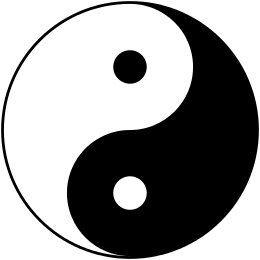
Intellect and intuition are two different things.
And, of course, when doing Straightness Training (ST), we need both:
- Both intellect and intuition.
- Both knowledge and experience.
Because without intellect and knowledge we would be re-inventing the wheel all the time.
However, the idea of something and the experience of something, are two very different things.
There is a BIG difference between knowing Straightness Training intellectually and knowing it as an experience.
That’s the reason why it’s an interesting story and why I share it because:
- The importance of experience is often underestimated.
- A lot of people think intuition is some ‘pink and fluffy’ feeling.
Besides this, if we want to discuss ST, then we must be comfortable with the fact that the words are no replacement for the experience.
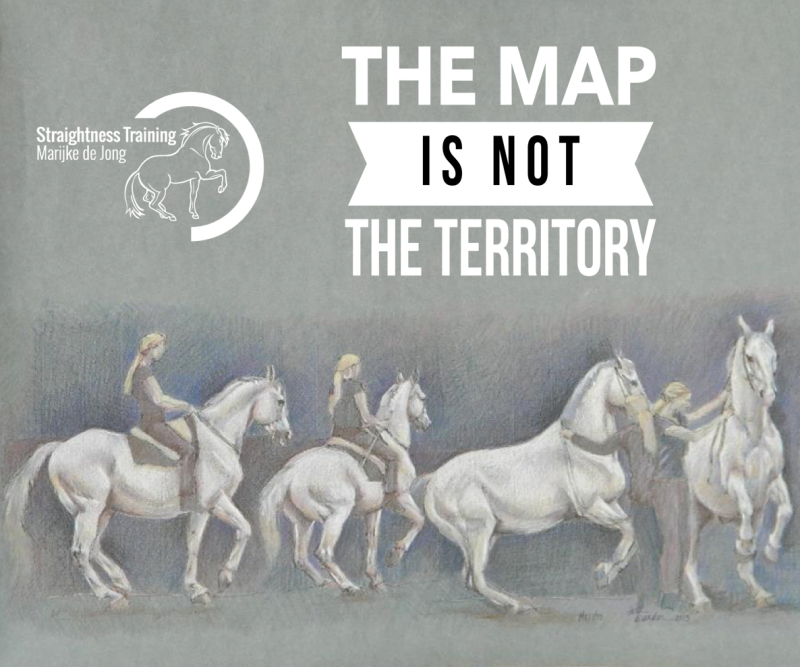
So when we’re talking about ST, really we’re just talking about the map and how to orientate ourselves towards the experience.
And this can be quite frustrating sometimes, for the intellectual and rational mind that wants to understand, and explain, and analyze everything.
In the western world, our logical, analytical, intellectual kind of thinking is highly valued.
But by going fully to the thinking side – the intellectual, analytical, rational, logical side – we can get lost in logic.
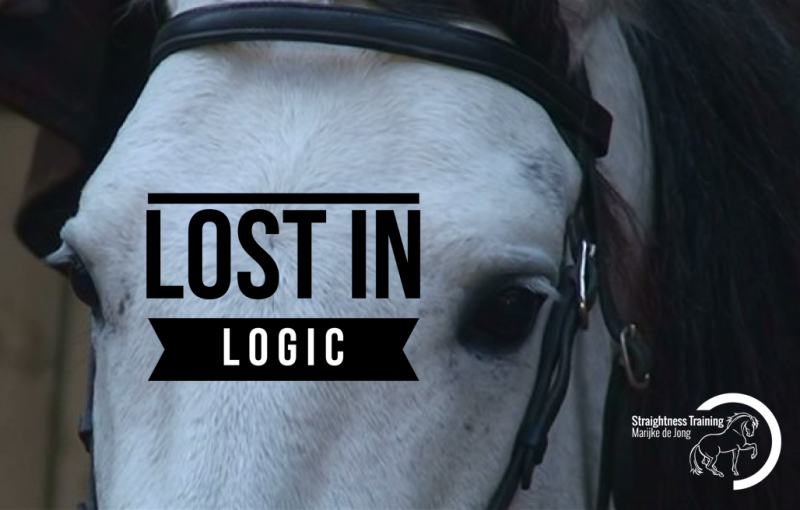
Lost in Logic
By overthinking things, we can get lost in dissecting everything in separate elements.
Now, of course, logic is VERY valuable, also with ST:
ST is a complex puzzle, with a lot of elements that are connected.
Just as we human beings are a complex puzzle, where everything is connected.
So at first, it’s good to separate and isolate those elements to get to know them.
So let’s say, I want to get to know you.
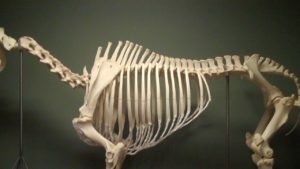
Then, if I dissect you, I may know something about your:
- liver
- kidneys
- biceps
- abdominals
- fascia
- tendons
- ligaments
- bones
- joints
- and all the other parts of your body.
I can even dissect your brain and label the lobes.
But I will not know everything about you!
What is most important about you I will not know:
- your character
- personality
- learning style
- what motivates you
- your favorite sounds, smells, and tastes
- And so on.
By dissecting, only the periphery of you, I will know.
That also means, that our intellect can only explore the periphery of Straightness Training.
Therefore, when we want to know the core of Straightness Training, we should not only rely on our intellect, but we also have to blossom into intelligence.
Blossom into Intelligence
Intellect and intelligence are two different things.
Intellect is dividing – which is especially useful for survival:
- You must know what is cold, and what is hot.
- You must know what is slow, and what is fast.
- You must know what is up, and what is down.
- You must know what is this, and what is that.
To know this, intellect is needed.
But intelligence is not dividing:
Intelligence is unifying – which is especially useful for creation.
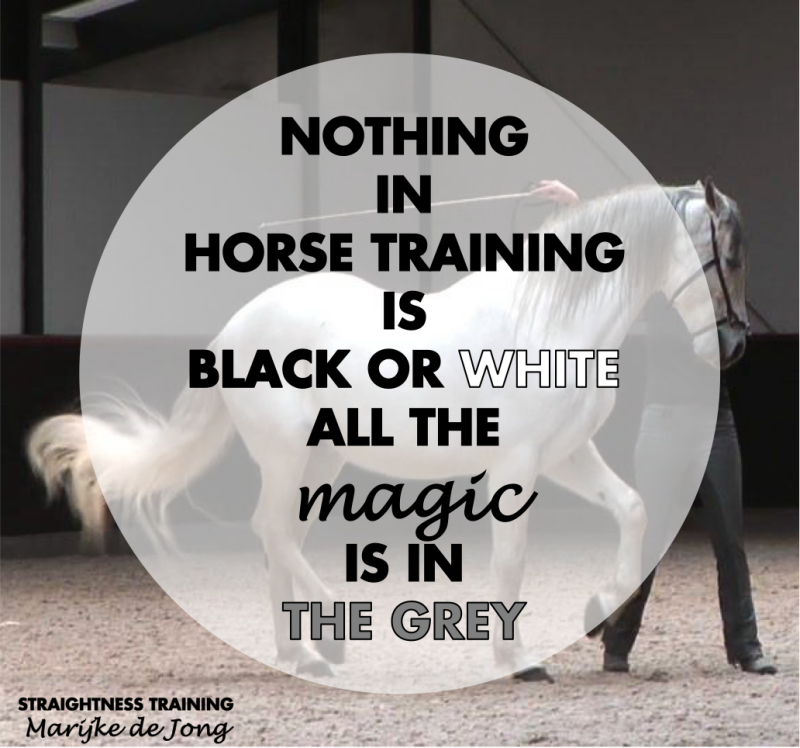
So to grasp the Straightness Training universe, we need intelligence as well:
- The intelligence which is able to take this and that together at the same time.
- Realizing that the whole is greater than the sum of its parts.
- Knowing that it’s the balance of the opposite things that makes the winners win.
- It’s the contradictions were all the supernatural power lives.
- Taking the black AND white, to find the magic in the grey.
If we embrace our intelligence in our lab, suddenly we see, there is a new sense of freedom and flexibility in everything that we do with our horse!
Now to blossom into our intelligence, we need to tap into our unconscious mind.
Conscious & Unconscious Mind
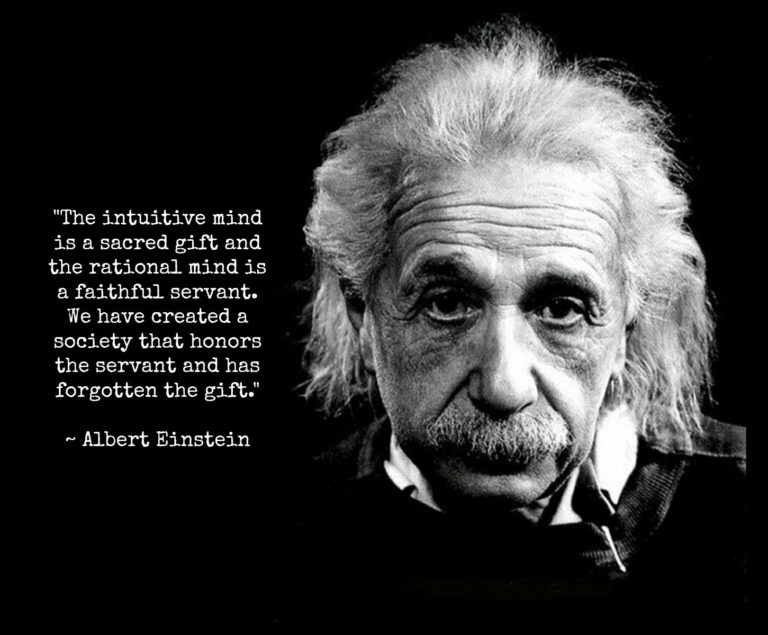
In the last 25 years, we’ve seen the dominance of rational thought.
But here’s a secret:
Little of our mental processes are conscious.
That is ‘intellectually’ proven:
Numerous cognitive neuroscientists have conducted studies that have revealed that 95% of our brain activity is beyond our conscious awareness.
And these unconscious mental processes act to alert us to things that our rather slow conscious mind may not be aware of.
Such as implicit things, and subtle things.
Here’s an example:
You may meet a person, and you cannot put your finger on it:
This person seems friendly…
Gives messages that make you want to trust them…
But at some level you think:
“There’s something wrong here!”
But you cannot actually express what it is.
You are just picking up something very important.
Because when we communicate, most of our communication is not, in fact, explicit at all.
It’s in:
- The choice of words
- The tone of voice
- Pauses between the words
- The energy behind the words
- Facial expressions
- Eye contact
- Gestures
- A certain posture
- Appearance
- Movement
- and other body languages.
Our unconscious and our intuition are in touch with those things!
And we should use those when training our horses!
Because to rule intuition out, is to miss most of the wise things that we could know.
Therefore, we should:
Unify Intellect with Experience
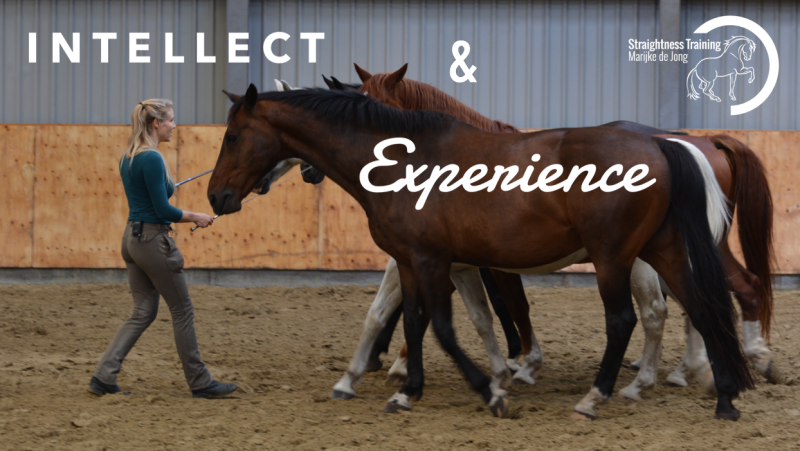
When doing ST, we need to “think first, act later”, therefore we need a map of the ST territory.
However, we cannot ONLY do ST intellectually, that means in an intellectual, logical, conceptual, rational, analytical, outside-in way.
We also need to do ST experientially and tap into our intuition, our intelligence, our unconscious, and experience ST from the inside-out in our own laboratory.
That means:
- ST gives us concepts, frameworks, and a set of instructions,
- But you have to fill in the details!
And you can do so by:
- Reading between the lines of the intellectual concepts.
- Being open-minded, curious, creative, and imaginative.
- Relying on our gut feeling.
- Trusting our ability to come up with original solutions.
- Being aware of the subtle stuff which lies outside the focus of attention.
- Being receptive to the things that we’re aware of unconsciously!
- Embracing the apparent paradox of ST.
And this will make you a successful ST practitioner, who not only is knowing ST intellectually from the outside in but also experientially from the inside out.
This will result in a shift from ‘cognitive’ mastery to ’emotional and phsyical’ mastery, understanding ST in a way that echoes on a deep core level.
Related and Relevant Articles:
- The Map is not the Territory >>
- All the Magic is in the Grey >>
- The whole is greater than the sum of its parts.
- The Science and Art of ST >>
- Objective Observation: Absolute Truth or an Opinion? >>
- The Skeleton of the Horse: Research On Spinal Movement >>
- Be a Researcher in your Lab
- The Lab Cycle
- Are you a Matcher or a Mismatcher? >>

